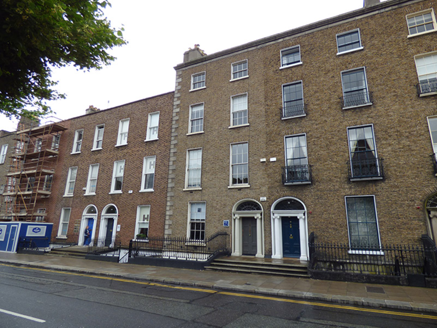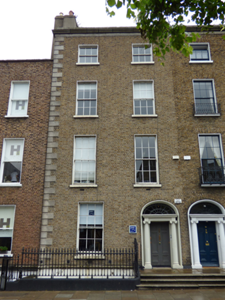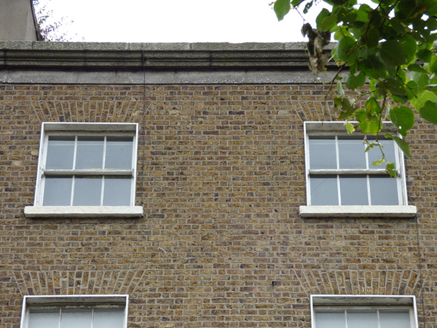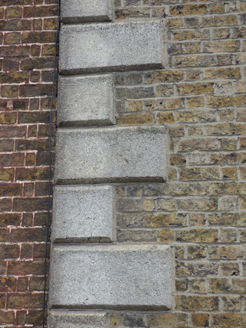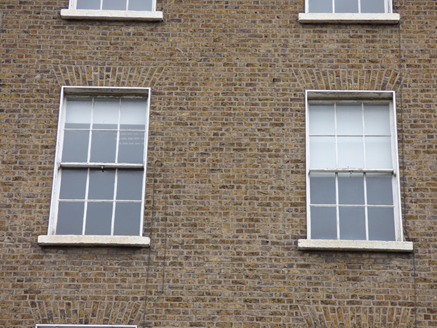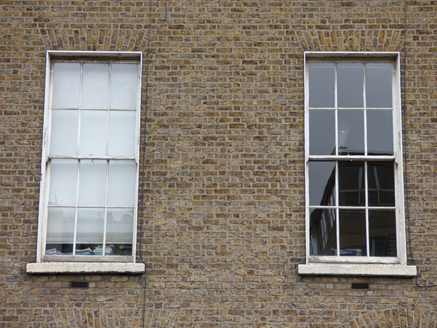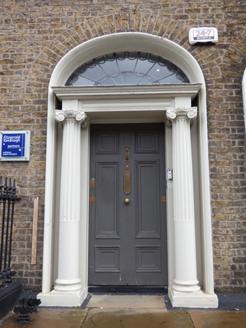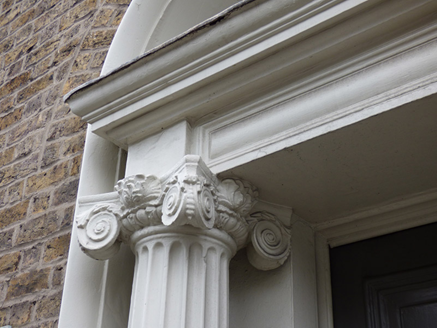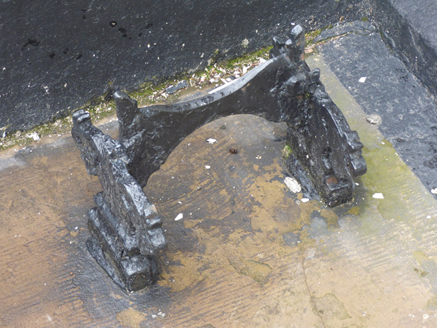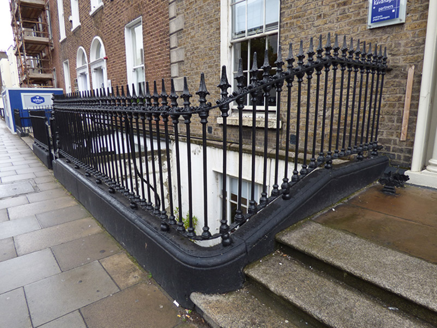Survey Data
Reg No
50100697
Rating
Regional
Categories of Special Interest
Architectural, Artistic
Original Use
House
In Use As
Office
Date
1825 - 1835
Coordinates
316911, 233023
Date Recorded
29/07/2016
Date Updated
--/--/--
Description
Attached two-bay four-storey former house over basement, built c. 1830 as one in terrace of three (Nos. 71-73) within longer row, with single-pitched three-storey return to east end of rear. M-profile roof, hipped to east end, behind parapet with granite cornice, blocking course and platband. Rendered chimneystacks to north party wall with terracotta pots, and shared chimneystack to return gable end. Flemish bond buff brick walling on granite plinth course, with rusticated granite quoins to upper floors, over painted ruled-and-lined rendered basement walling; smooth rendered to rear elevation. Square-headed window openings, diminishing in height to upper floors, with painted rendered reveals and painted masonry sills; round-headed window opening to rear stairs hall. Timber sliding sash windows, three-over-three pane to top floor and six-over-six pane to lower floors with convex horns; replacement multiple-pane timber casement to basement with fixed sidelights. Rear has timber sash windows, four-over-four to top floor, eight-over-eight pane below and with six-over-six pane round-headed window to east bay. Elliptical-headed doorway with moulded reveal, painted masonry doorcase comprising half-fluted columns, Scamozzian Ionic capitals, entablature with panelled frieze, decorative leaded fanlight, and six-panel timber door with beaded muntin and brass furniture. Shared sandstone entrance platform with cast-iron boot-scrape and three bull-nosed granite steps to street. Spear-headed cast-iron railings on painted moulded granite plinth enclosing basement area, with cast-iron gate. Plainly detailed square-headed door opening beneath entrance platform. Yards to rear of plot.
Appraisal
An early to mid-nineteenth century house, forming part of a cohesive terrace of three (Nos. 71-73) that bookends a terrace of nine, the middle houses being a storey lower than the ends. Nos. 71-73 are unified by rusticated granite end quoins and a continuous projecting eaves cornice. Characterized by elegant proportions, a good Scamozzian Ionic doorcase and early Victorian detailing, No. 71 is fairly well retained, making a worthy contribution to the architectural character of Baggot Street Lower and to the wider Georgian core of south Dublin. Planned in the late 1780s, development of the street began towards the west end, but progress was hampered by recession in the 1790s and the majority of buildings were constructed in the early nineteenth century, with some gaps remaining until the mid-1840s. The variations in levels, materials, doorcases and detailing across the streetscape highlight the speculative nature of its development.
